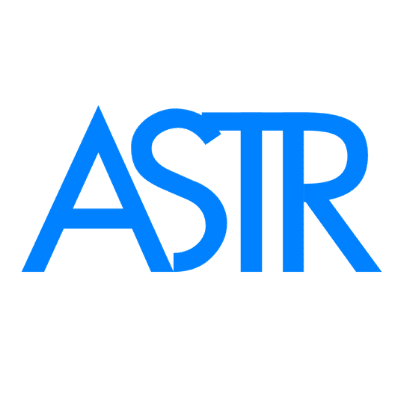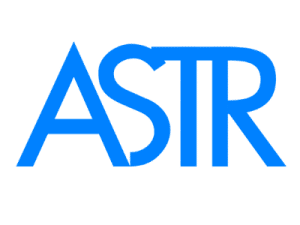Shocking Secret – 5 Minutes A Day to Stop Joint & Muscle Pain Naturally
Shocking Secret – 5 Minutes A Day to Stop Joint & Muscle Pain Naturally
What is joint & muscle pain?
Musculoskeletal pain can be described as pain that affects tendons, bones, muscles, nerves, and ligaments, and the pain that is related to musculoskeletal disorders. Musculoskeletal pain is a prevalent medical and socioeconomic concern across the globe, being a major contributor to disability in the general population worldwide. Chronic musculoskeletal pain contributes to increased suffering when performing daily activities, increased consumption of analgesic drugs, and greater frequency of absenteeism from work. [1] The following sections elaborate on the different ways the general population utilizes to alleviate and discuss the effective pain-relieving options along with ASTR protocols.
Muscle and Joint Pain
Pain is a symptom of an underlying disease. A disease is defined as the disorder of structure or function in a human, animal, or plant, especially one that produces specific signs or symptoms that affects a specific location. There a several forms of muscle and joint pain, that affect different groups of the population depending on occupational characteristics and individual attributes. These include the following examples of muscle and joint pain.
- 下巴痛
- Headache and migraines
- Hand and wrist pain
- Back and hip pain
- 脚和脚踝疼痛
- 颈部疼痛
- 肩部疼痛
- 肘部疼痛
- 膝盖疼痛
Modalities for Pain Relief
Based on several research studies, there are a number of modalities that provide short-term pain relief. These include stretching and exercise, spinal manipulation, acupuncture, trigger point injection, myofascial release, dry needling, massage therapy, manual therapy or soft tissue mobilization, use of non-steroidal anti-inflammatory drugs (NSAIDs), manual therapy and exercise, craniosacral therapy, McKenzie method, instrument assisted soft tissue mobilization, Kinesio taping, active release technique, strain counter-strain, and opioids.
A literature review of the assessment of the effectiveness of treatment options for the alleviation of pain, conducted by Jacobs 等。, concluded that “Treatment methods following the biopsychosocial model seem to yield long-term pain reduction, increased range of motion, and improvement in functional activities. On the other hand, the single modality treatment methods seemed to yield either short-term pain reduction or no pain reduction.” [2]
Ineffective Treatment Measures
While the treatment modalities discussed above have varying degrees of effectiveness in reducing or eliminating pain, the following treatment measures are commonly employed by the general population and health practitioners, yet are not effective in alleviating musculoskeletal pain.
- Application of heat and ice on the affected region
- Electrical stimulation of the site of the affected region
- Use of foam roller and massage on the affected region
- Stretching of the affected region
- Mobilization of the affected region
- Strength exercises during the inflammatory phase of the wound healing cycle
Biopsychosocial Well-Being
The concept of biopsychosocial well-being of an individual can be categorized as follows.
Biological |
Social |
Psychological |
| Gender
Disability Physical health Neuro-chemistry Stress reactivity Genetic vulnerability Intelligence quotient Temperament Substance abuse Well-being |
Education
Social support Peer relationships Family background Socioeconomic status Substance abuse Family relationships Life events Well-being |
Behavior
Personality Attitudes Beliefs Learning and memory Coping and social skills Self-esteem Emotions Intelligence quotient Temperament Life events Family relationships Well-being |
In the biopsychosocial approach to pain relief, the treatment measures include the following.
- Medical treatment for pain and inflammation
- 营养
- Soft tissue release
- 人体工程学
- Occupational therapy or work-related training
- 按摩
- Meditation and yoga
- Behavior modification therapy or support group
- 练习
- Psychologist
Despite the effectiveness of this treatment approach to pain relief, biopsychosocial treatment is associated with several challenges for the patients. Firstly, this treatment is very costly. The patient is required to visit a physical therapist, occupational therapist, nutritionist, soft tissue therapist, ergonomics class, behavior modification therapist, meditation class, and pain doctor. These clinical visits can pose a financial burden on the patients. Secondly, the biopsychosocial treatment approach is time-consuming, consisting of an average of 5 hours of training each week along with time spent traveling. Moreover, the overwhelming requirements of this therapeutic approach may compromise patient compliance and also contribute to poor communication among healthcare providers.
ASTR – A Modified Biopsychosocial Treatment
ASTR is a biopsychosocial treatment modality, which uses unique ASTR instruments, maneuvers, and protocols for targeting different therapeutic aspects. These include behavior modification, scar tissue, fascia restriction, muscle spasms, ergonomics, trigger points, gait, exercise, nutrition, stress management, and inflammation.
Normal Healing Cycle and ASTR Treatment
The normal healing cycle comprises inflammation, proliferation, and maturation stages. However, in chronic conditions such as chronic musculoskeletal pain, the wound-healing cycle does not progress normally but rather oscillates between the inflammation and proliferation stages. This gives rise to pain, redness, swelling, loss of function, warmth, fascia restrictions, trigger points, and scar tissue formation. [3]
Following are ASTR 工具 and protocols that are useful for the resolution of the healing cycle and alleviation of pain in musculoskeletal conditions.
| Stage of Wound Healing | ASTR Treatment |
炎症阶段 |
|
Proliferation stage |
|
ASTR Pain Packages
There are different ASTR Packages comprising specific ASTR 工具 for varying degrees of pain intensity. An individual can select any of the three ASTR Pain Packages according to pain intensity.
| 轻度疼痛套餐 | 中度疼痛套餐 | 剧烈疼痛套餐 | |
| Pain level | 0-3/10 | 4-6/10 | 7-10/10 |
| Tools to resolve the proliferation stage | A1
A3 A5 |
A1
A3 A5 |
A1
A3 A5 |
| Tools to resolve inflammation stage | 麦格纳治疗 1 | 麦格纳治疗 2 | 麦格纳治疗 2 |
| Additional supplements | 没有任何 | 没有任何 | Joint and Muscle Repair Pack
胶原蛋白活性 K2 and D3 Complete 镁活性 欧米茄主动 |
结论
ASTR is a biopsychosocial treatment approach to the alleviation of pain arising from musculoskeletal conditions. This treatment approach is different from conventional biopsychosocial treatments, which are not only costly but are far less convenient in terms of overwhelming requirements and poor communication between practitioners from different specialties. ASTR is a complete treatment package, which targets behavior modification, scar tissue, fascia restriction, muscle spasms, ergonomics, trigger points, gait, exercise, nutrition, stress management, and inflammation.
参考
- El-Tallawy, S. N., Nalamasu, R., Salem, G. I., LeQuang, J. A. K., Pergolizzi, J. V., & Christo, P. J. (2021). Management of Musculoskeletal Pain: An Update with Emphasis on Chronic Musculoskeletal Pain. Pain and therapy, 10(1), 181–209. https://doi.org/10.1007/s40122-021-00235-2
- Jacobs, J., Sielski, M., Jones, T., Huynh, H., Victoria, M., Miles, C., … & Nguye, I. Evaluating the Effectiveness of Treatment Options for Pain: Literature Review
- Guo, S., & Dipietro, L. A. (2010). Factors affecting wound healing. Journal of dental research, 89(3), 219–229. https://doi.org/10.1177/0022034509359125

